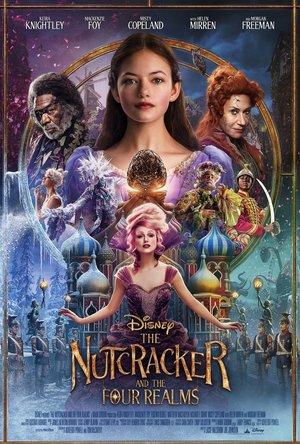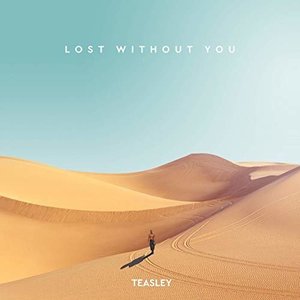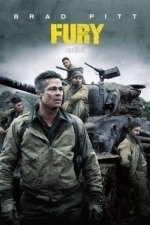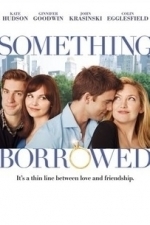Ross (3284 KP) rated The Nutcracker and the Four Realms (2018) in Movies
Nov 5, 2018 (Updated Nov 5, 2018)
Here Disney have taken some liberties as Clara's brother and sister take the roles and names of her mother's siblings in the original, and for no apparent reason the film based on the Russian ballet that was based on the French adaptation of the German fairy tale, is set in London. I can only assume this was to up the Festive quotient, but seems a very odd choice, despite keeping a number of the German themes.
Keira Knightley is very irritating, doing an ear-piercing impression of Queenie from Blackadder.
Neither of the actors playing Clara or the Nutcracker are very good or likeable and you find yourself bored and starting to root for Mother Ginger just to end it.
The film is too long, and drags in large parts, and all three of my kids were restless for a lot of it. And there was a definite lack of large-scale special effects, some impressive scenes but audiences expect spectacles (not 3D glasses, I mean big scenes!) these days and those were lacking.
The most enjoyable scene was the use of ballet to get Clara up to date with the world she found herself in, being quite respectful to the medium it was adapting (though I can't say how authentic it was!).
Carma (21 KP) rated Wild Ride Cowboy (Copper Ridge, #9) in Books
Jun 17, 2019
Alex Donnelly and Clara Campbell are the main characters in Wild Ride Cowboy. Alex is the youngest Donnelly brother and was in the military. He comes back to Copper Ridge with his (full) brother Liam to his family ranch after his grandfather passes away and leaves him ¼ of the ranch. His older ½ brothers are also living at the ranch (Finn, Cain have their own stories) and they must figure out how to survive this newfound family atmosphere. Alex has a painful background with both his home life growing up and his military background. He comes back not only for the ranch but to take care of a responsibility he inherited from a fallen friend.
Clara Campbell hasn’t had a great life. Everyone she’s loved in her life has died on her. She was starting to feel cursed then Alex walked into her life and took over. She knew what she wanted, or so she thought, but Alex may know better. Can they work together to save her ranch and their hearts?
Personally I loved this book. As I said above, Alex was a favorite character of mine for a while. Putting him with Clara, someone 10 years younger than him, was a great choice. They help each other grow and flourish, getting strength off each other. My absolutely favorite part of the book was when Alex told Clara she had the appetite palette of a 6 year old haha.
Bong Mines Entertainment (15 KP) rated Lost Without You - Single by Teasley in Music
Jul 10, 2019
“I don’t wanna leave too soon ‘cause I’m lost without you. I don’t wanna seem too rude when I’m leaving town. Hoping I come back to find out that you miss me too. And you’re not upset, screaming out loud, ‘I been so lost without you’.” – lyrics
‘Lost Without You’ tells an interesting tale of a young guy who thinks about a special woman in his life while on a one-way flight to Brooklyn.
Even though he’s successful and making money, he doesn’t want to spend it alone because he feels like he owes her something, since they started out with nothing.
But things have changed between them and he’s been so lost without her. Later, he admits that if she’s gone, then he won’t live on.
What he really wants is one more dance before he lets go completely. Hopefully, he can get her to stay on the phone long enough to convince her that their relationship doesn’t have to end.
“I wrote this song reflecting on the relationships that have fallen to the wayside in the process of chasing something bigger than myself. So much time is spent on self-improvement that I’ve had to give up most late nights at the club with friends and love interests. I’m hopeful that I will continue to attract everything that is meant for me and that’s what this track speaks too. Hope.” – Teasley
Teasley draws inspiration from the chill coastal lifestyle. Whether on the beach or in the gym, he strives to embody a laid-back California vibe.
Not too long ago, the bubbly crooner released his debut EP, entitled, “Feeling Better”, co-produced by EDM trio Cheat Codes.
The project featured “Hit It”, which reached over 1 million streams online. Also, the accompanying music video was sponsored by Red Bull and reached the top 10 on MTV dance charts.
‘Lost Without You’ contains a relatable storyline, pleasing vocals, and summer-inspired instrumentation flavored with a dance-floor friendly pop aroma. Also, the likable tune will be featured on Teasley’s upcoming project, entitled, “Pineapple Juice”.
Gareth von Kallenbach (980 KP) rated Fury (2014) in Movies
Aug 6, 2019
Brad Pitt delivers a stellar performance as Don “Wardaddy” Collier. He is a war hardened Sergeant who struggles to keep the few shreds of his humanity while preparing his new “green” typist who was assigned to his tank after one of their battle brothers has fallen. Pitt takes the young Pvt. Norman Ellision (Logan Lerman) under his command and works to make him into war hardened soldier. Pitt knows that by doing so he will not only to save the young man’s life, but probably the lives of the other men in his care. This ensemble cast shines with solid performances from Michael Pena, Jon Bernthal and Shia LaBeouf. I want to take a moment to highlight LaBeouf especially. He has gained tons of negative press in recent months for several reasons and the promotion of this film has shown little of LaBeouf thus far. No doubt to protect itself from the backlash in his public life. But if you decide to not go and see this film because of him, you will miss out on a strong more dramatic performance we really haven’t seen from him often and one that will remind audiences that he is a good actor.
This action in this film is methodical and someone slow and somewhat cartoonish thanks to tracers on the gun and cannon fire that makes it look like “Star Wars” at times, however the intensity is constantly building from the opening sequence through the climax of the movie. Even in the middle of the film where we are seemingly in a safe place, the intensity is continues to build as we are unsure just how humane these characters are. This intensity leads us to care about these characters and search for relief in the climatic conclusion.
Gareth von Kallenbach (980 KP) rated Something Borrowed (2011) in Movies
Aug 7, 2019
Rachel (Ginnifer Goodwin) is a successful New York City lawyer, the ever-loyal and perpetual good girl, who, on the night of her surprise 30th birthday party, sleeps with Dex, her old study buddy and secret crush from law school. Unfortunately, Dex happens to be the fiancé of Rachel’s egotistical best friend Darcy’s (Kate Hudson). Throughout the movie you find Rachel conflicted with the thought of hurting her best friend because she has just realized she is in love with Dex (Colin Egglesfield). Dex feels equally guilty for having fallen for Rachel but would rather do what everyone expects him to do, as opposed to following his heart.
As Rachel tries to assist the self-absorbed party girl Darcy plan her wedding, she finds it difficult to to hide her feelings for Dex. Rachel and Darcy’s childhood friend Ethan (John Krasinski) figures out that Rachel and Dex are more than just friends. He lends a shoulder for Rachel to lean on as well as some very harsh criticisms to help her realize that she does deserve to be happy.
Based on the novel written by Emily Giffin, Something Borrowed is a romantic comedy that explores the true meaning of friendship, love and ethics. Always a fan of Ginnifer Goodwin, she does a decent job at playing our heroine/doormat, Rachel White. Kate Hudson was spot-on with the role of self-centered, always-gets-her-way Darcy. And let’s not forget the Tom Cruise look-alike, Colin Egglesfield, who for some reason didn’t impress me much as Dex. I can’t quite put my finger on it, but there was definitely something missing there. Plug in some weekend getaways to the Hamptons, some awkward drinking and partying moments, some flashback moments of Darcy and Rachel’s childhood as well as flashbacks to Rachel’s law school days when she was swooning over Dex and voila! A mediocre, very predictable movie. I’d have to say if it wasn’t for the sarcastic comedic stylings of John Krasinski as Ethan, this movie would have been a major flop.
This film is definitely a twist on My Best Friend’s Wedding, but not in the best way. If nothing else, it’s worth seeing as a “girls night out” kind of movie!
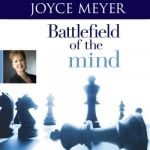
Battlefield of the Mind (by Joyce Meyer)
Book
App
In celebration of selling 3 million copies, FaithWords is publishing a special expanded edition of...

Rain Sounds HQ: sleep aid
Medical and Health & Fitness
App
Can’t sleep? Fall asleep fast to over 75 high-quality full-stereo recordings from around the...
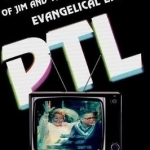
PTL: The Rise and Fall of Jim and Tammy Faye Bakker's Evangelical Empire
Book
In the early months of 1987 Jim and Tammy Faye Bakker had it all-a popular Christian talk show,...

the Urbane Forager: Fruit & Nuts for Free
Book
"The perfect book for anyone wanting to launch themselves into foraging...without swapping their...

The Political Origins of Inequality: Why a More Equal World is Better for Us All
Book
Inequality is the defining issue of our time. But it is not just a problem for the rich world. It is...
